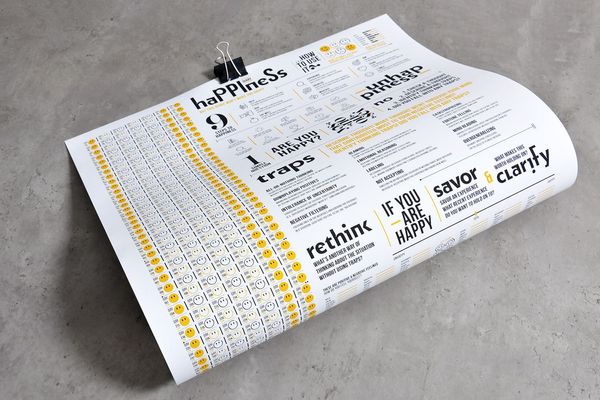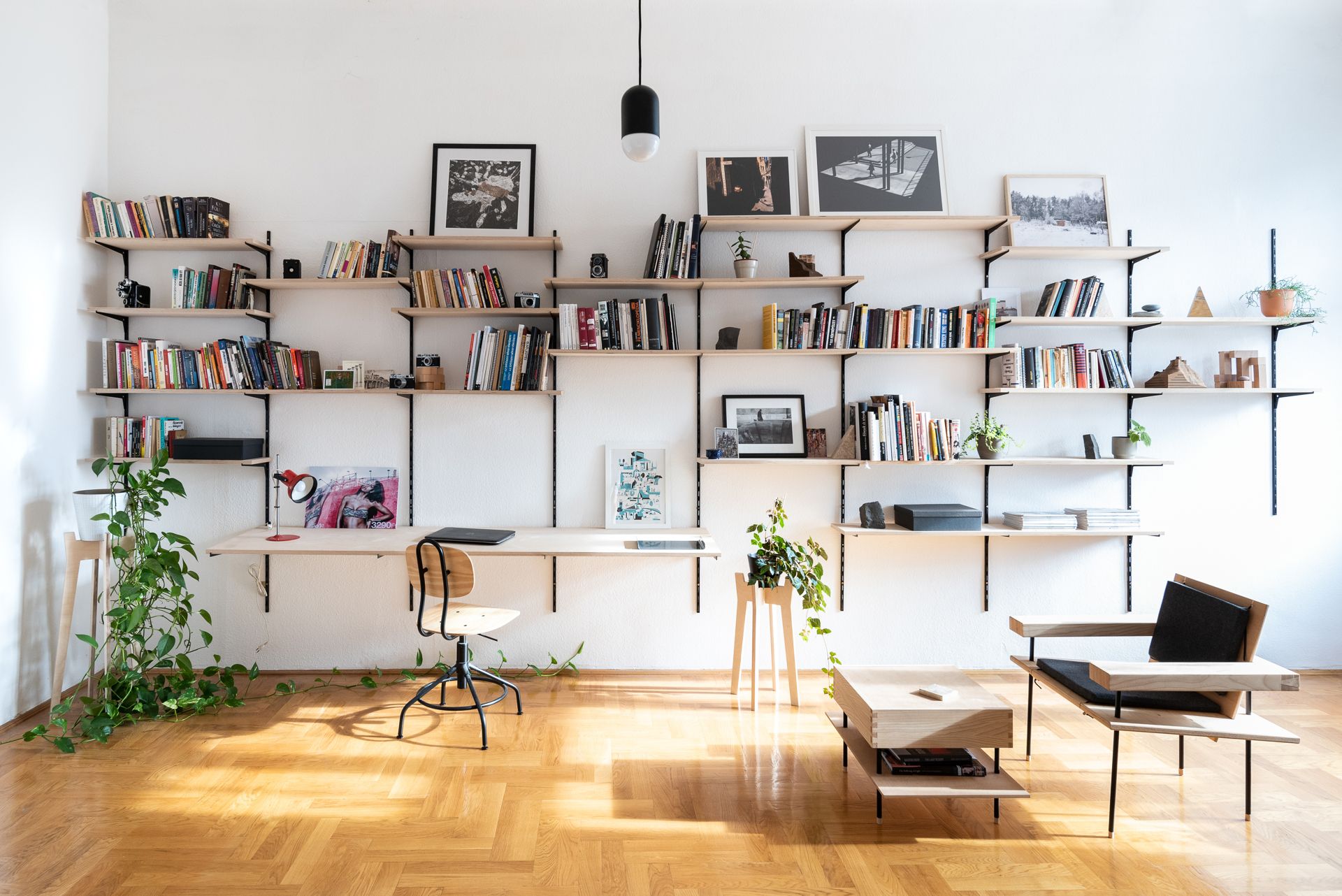Geometric, plain and playful. These expressions popped up in our minds when we see the projects and custom-designed furniture of Komok design-manufacturing studio. The founders, Péter Nagy and Norbert Juhász design with high aesthetic value and reasonable functionality in mind, and if possible, they are more than happy to involve other designers into the process. We asked them to tell us a bit about themselves and the brand. Interview!
When and how did KOMOK start and where does the brand name come from?
Péter Nagy: Both the concept and brand name of Komok come from Norbi. Approximately a year ago, he told me (in the context of implementing the forest cabin) that he has been thinking about launching an umbrella furniture brand for some time that would allow for thinking together with other Hungarian designers on developing and manufacturing different products. Anyone could participate in it who is open to collaborations of the kind and of course with whom we can find a mutual tone. This openness was what I liked about the whole model already at the time.
Norbert Juhász: For me, this was a result of a long search for my path. I’ve been feeling like something was missing since I finished university, and I have tried to fill this void in many ways: with my interest and works in photography for example, but this is from where the idea of our motor home built in 2016 came from, too. Perhaps the latter was the cherry on top: I realized that I enjoy small, human-scaled things very much, which I cannot only influence on paper, but which I can make and build in reality. Conceiving the idea of the brand was only a small step from here. Over the years that have passed since, I have been consciously steering myself towards this direction, I completed a course in joinery and I settled at an architecture-interior design studio, at Nanavízió.
We launched Komok officially at the end of last year, together with Peti. The name is a bit playful, and is beautiful and exciting both from a formal point of view, from the point of typeface, perhaps I would even say it has a bit of Eastern European feeling to it. When figuring out the brand name, we played with the prefix of the keywords we think are important (communication, composition, combination). Komok was born out of the plurals of these words.
Within Komok, you offer architectural and interior design solutions, and you also develop your own furniture brand. Norbert, you graduated as an architect, and are also proficient in architectural photography. Péter, you also graduated from the department of architecture of Budapest University of Technology and Economics with your floating public-space-island project, and then you worked as an architect-designer at Építész Studio and in the office of László Vincze. How is the work divided between you two, who does what within the company?
Péter Nagy: During the time spent at various architect studios, I also worked as a designer for VALYO. In the meantime, I also completed a course in joinery, because I have been drawn to working with wood and furniture design for long: the missing piece for this was obtaining the professional knowledge. I started working as a freelance architect at the end of 2019, and Komok was also founded in the meantime, which started off as a separate project. Within Komok, I primarily focus on designing and manufacturing products. These are limited series furniture, or interior design elements, fitted furniture made based on individual orders.
The elements of their visual appearance are mainly the courtesy of Norbi. We come up with the strategic and communicational plans together. We think similarly in many questions, both of us have a rational approach towards things and we both assess our possibilities rationally, but other than that we are basically self-propelled.
Norbert Juhász: It turned out already at the very beginning that we form a very good team, and maybe that’s the most important. Both of us think in a rational, logical, engineer-like way, which we took up in university. This is accompanied by pragmatism and practicality, complemented by aesthetics and high quality visual appearance. Because of this, we came to trust each other quickly, we were able to make decisions promptly and learned to respect the common goal. In reality both of us do various things and we ask for the other’s opinion many times. What works well is if every project or product has a person in charge, who supervises the processes. It’s also true that we can put our egos aside and listen to the other, if he has something to say.
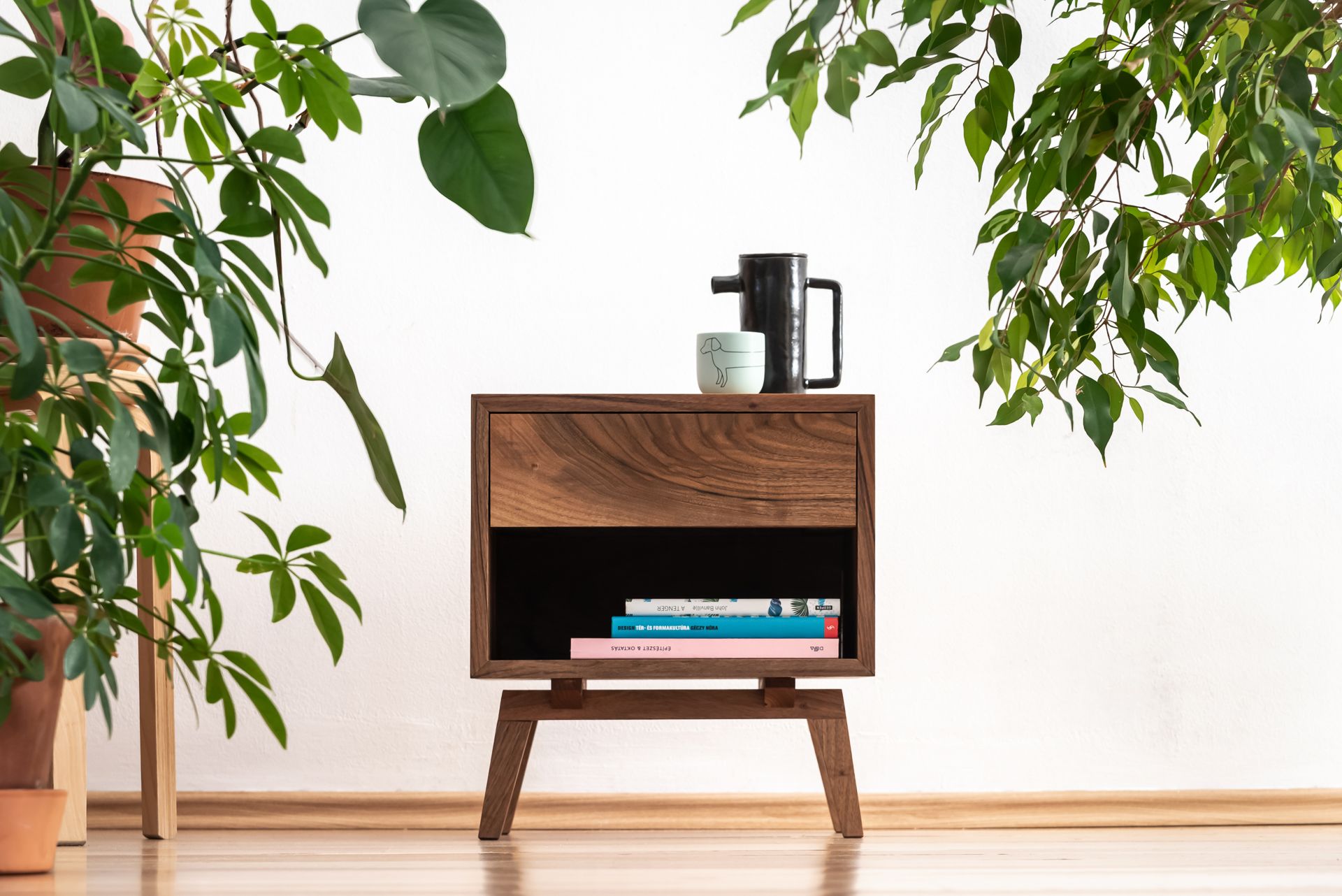

You aim to apply the circular economy model, and think in environmentally friendly technical solutions. What does this mean exactly in practice?
Péter Nagy: Komok is in an early, experimental phase at the moment: exploring all the opportunities is our priority currently. This includes the projects taken up, the materials used and selecting the field-specific works. So that we can create products of the best possible quality, it’s very important to get to know as many options as possible. The finished products must function well, must look good and must be also environmentally friendly, all throughout their lifecycle.
Currently we apply the circular economy model in a manner that we use Hungarian raw materials and labor force for every possible matter. We design our products to be long-lasting and durable. We only apply natural materials for surface treatment, so our furniture can also be used near children. If our product is near the end of its lifecycle, it can be recycled almost fully, and we don’t abandon our customers even if the furniture needs interim maintenance: we repair the furniture we make.
There are huge amounts of plastic out in the world, which seem to be working quite well as secondary raw materials – we also have some plans in this regard. If all goes well, we can show you more about this in a couple of months.
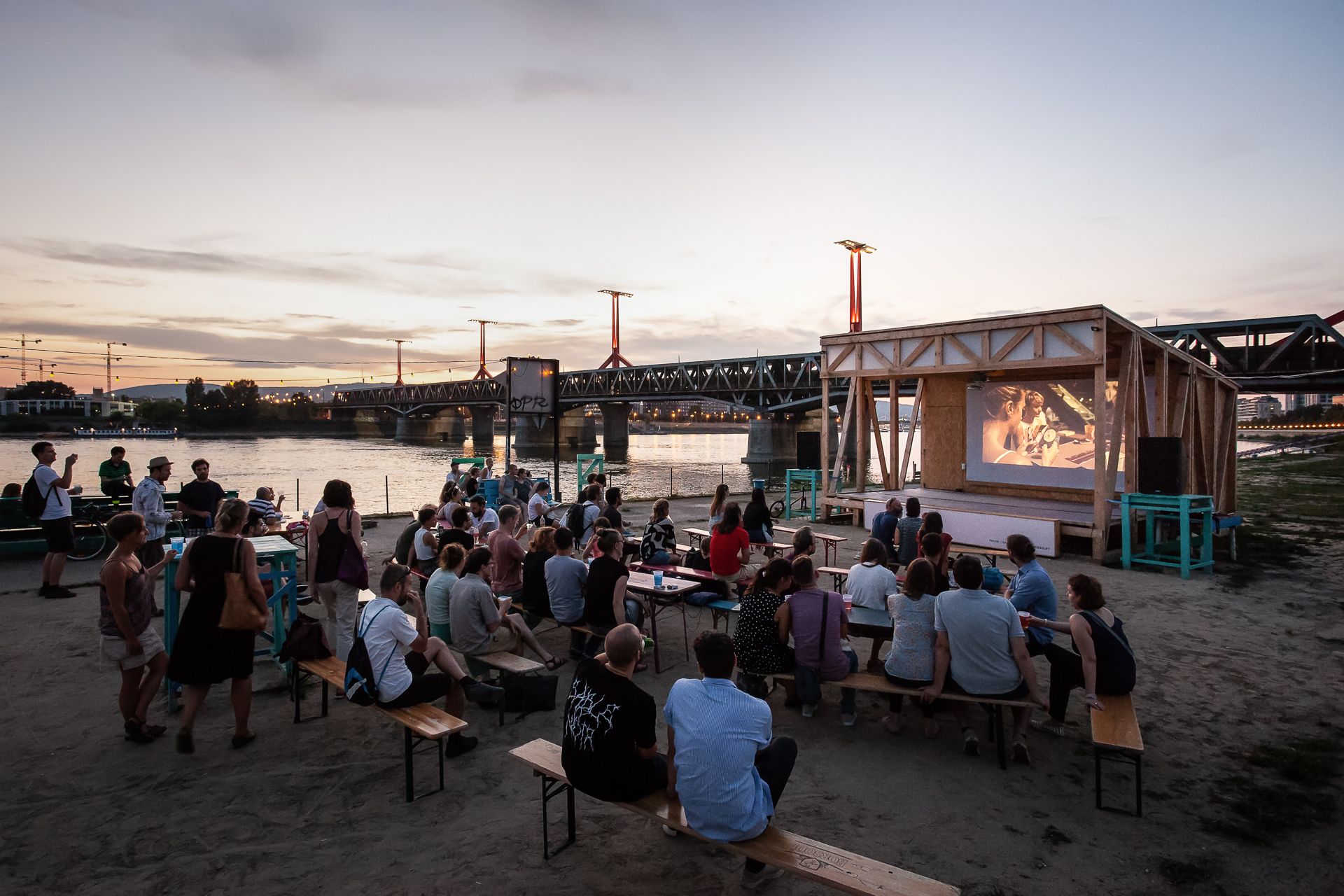
Norbert Juhász: We try to keep the procurement chain short, and we strive to meet every participant in person, too, and also to get to know what we use or incorporate in the most accurate way possible. In addition, we also aim to keep most of the work processes within the house: we do have a small workshop in the countryside, but it would be better to do everything in Budapest.
The circular model also means that we design every product in a manner that it can be dissembled so that there are no composites that cannot be recycled afterwards due to this. The shade of the “Kapszula” lamp can be replaced any time separately from the other parts of the lamp, the “Pland” plant stand and the “LDV” desk are made without screws or adhesives, either parts can be manufactured at any time. We designed the latter in an almost zero-waste manner. This also includes the shelf system designed for our own home. Although this isn’t a product and there are no technical tricks in it, on the contrary: I complemented the cheapest standard wall shelf system used for storing with simple plywood shelves. Nothing extraordinary, but the end result is still very exciting. It’s also cheap and can be varied, carried or recycled at will.
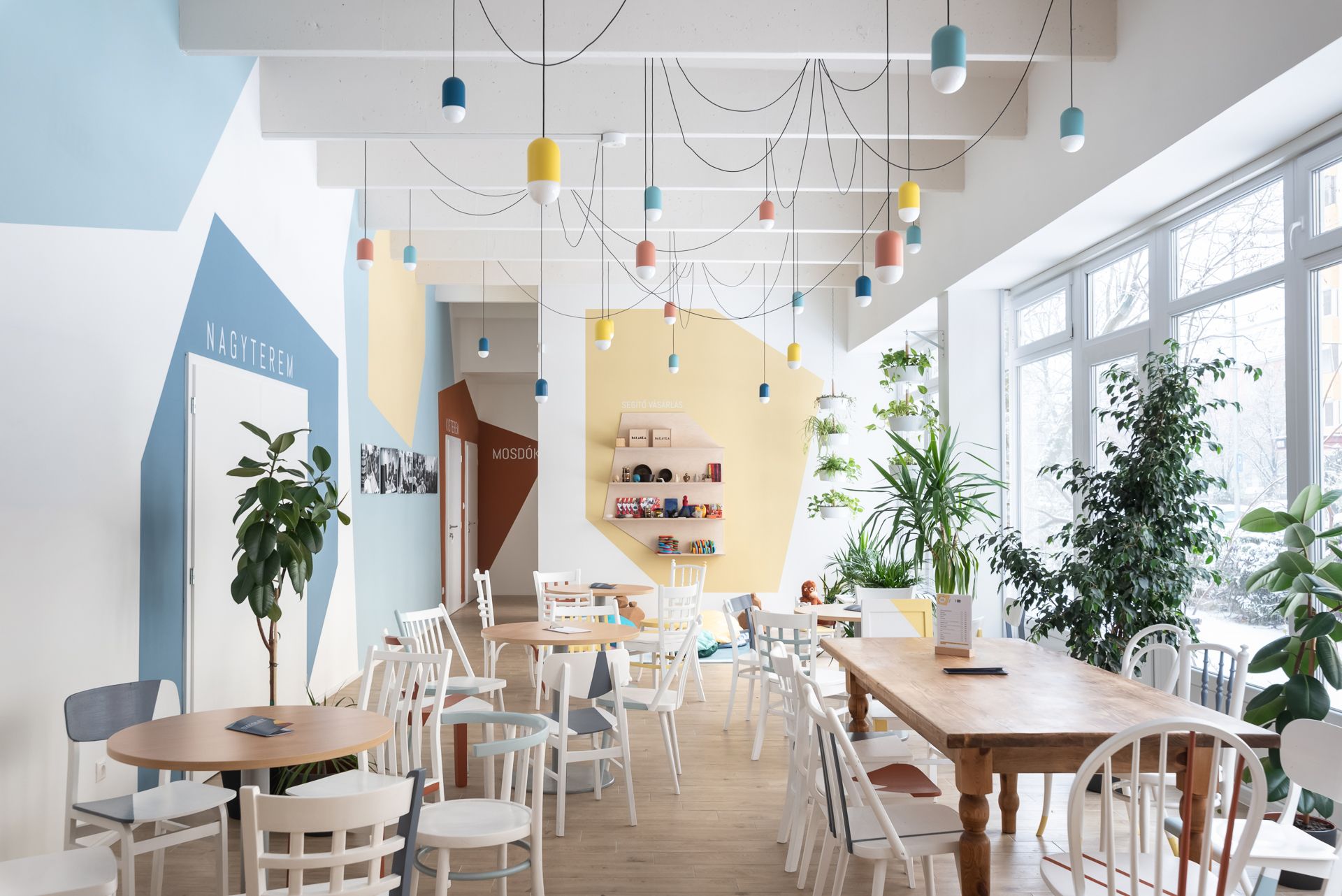
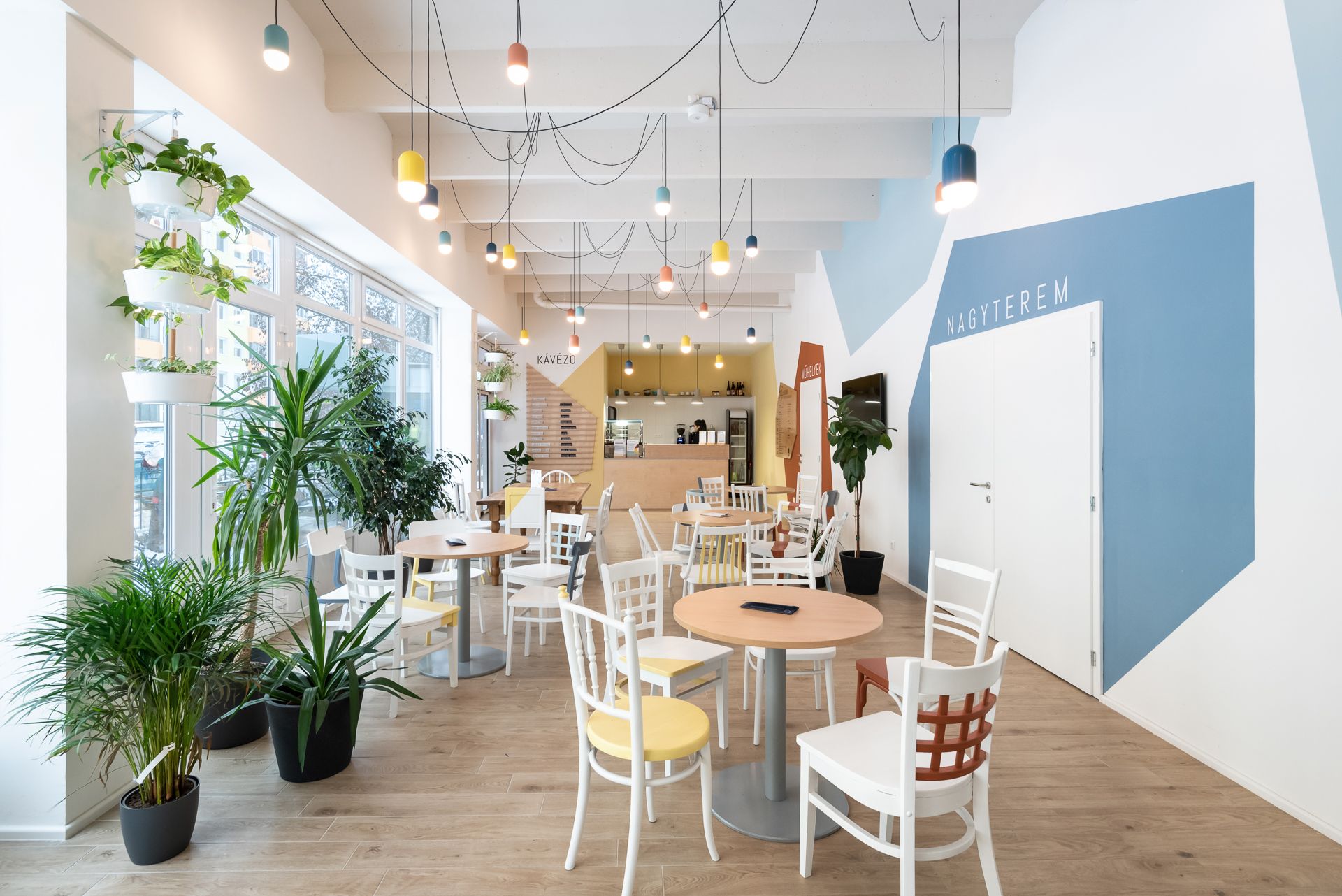
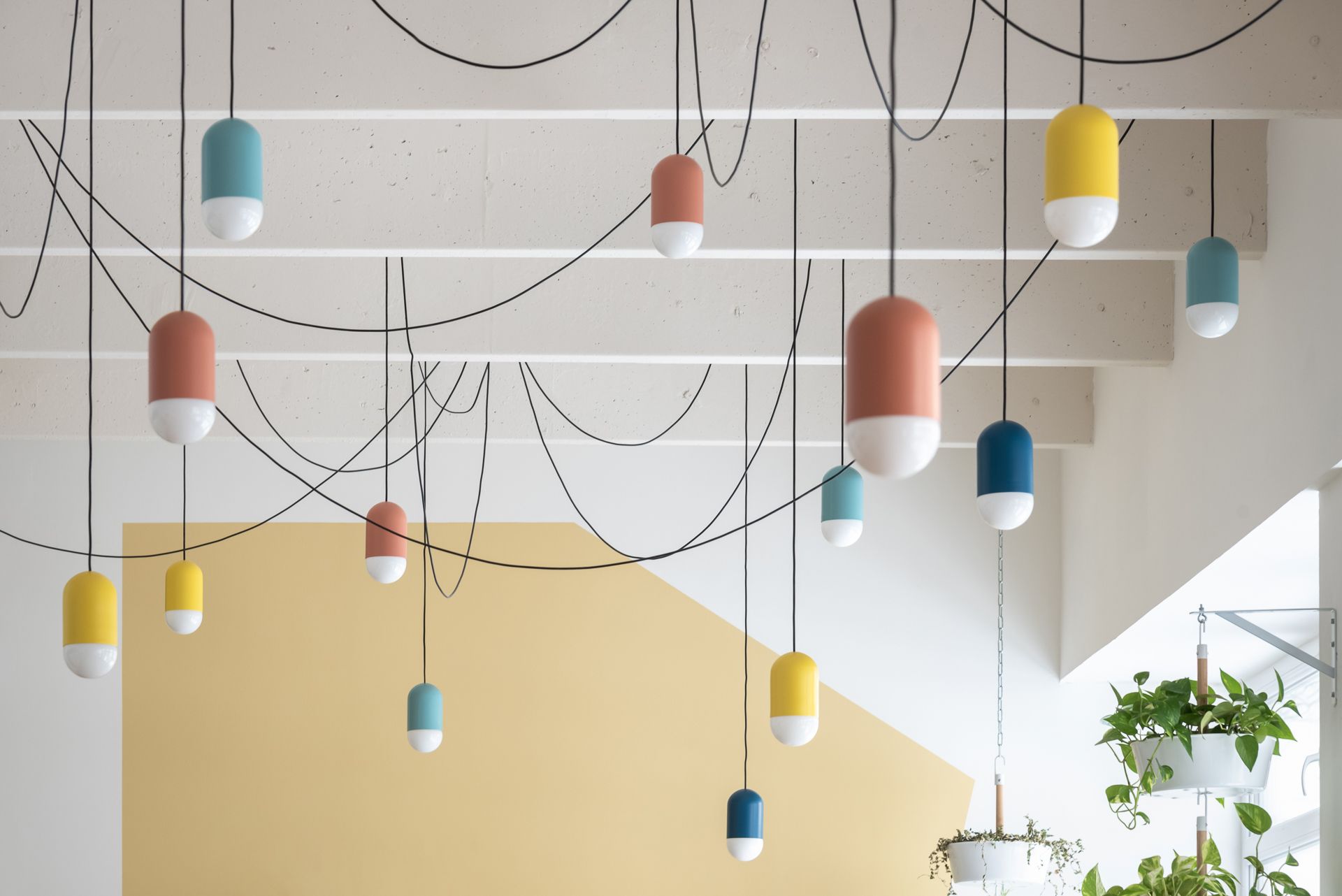
You collaborate with other designers and construction experts on a regular basis. Your flower stand “Pland” was designed by Beatrix Guld, and you worked with Dániel Illés Pálfi when designing your “Kapszula” hanged lamp, but we could also mention “Stefánia39” from your projects, in the case of which Péter designed a gigantic wardrobe with Éva Sághegyi and Bence Falussy. Could you tell us a bit about these collaborations?
Péter Nagy: We are in the fortunate position of having many acquaintances who work in design and with whom we can also find a mutual tone in terms of taste. Because of this, we were contacted even at the earliest stages with jobs that we were happy to do.
I can tell you a bit more about “Stefánia 39”: Évi and Bence are our friends, both of them are architects and work with architectural design. We can owe the idea that it would be worth creating fitted furniture and interior design construction projects within Komok to them, as they contacted us with a job of the kind for the first time. They had an exact idea about what they wanted to see. We created the design of the product and built it according to our best knowledge, and we also enjoyed it in the meantime very much. Compared to how easy creating a wardrobe of the kind seems, it’s not easy at all, but this was the challenge in it. For this year, we set a goal of doing 6-10 similar projects and then we’ll see whether we want to proceed with this line or not. The stipulation, however, (the same as in all of the projects) is that we create a functionable and beautiful product.

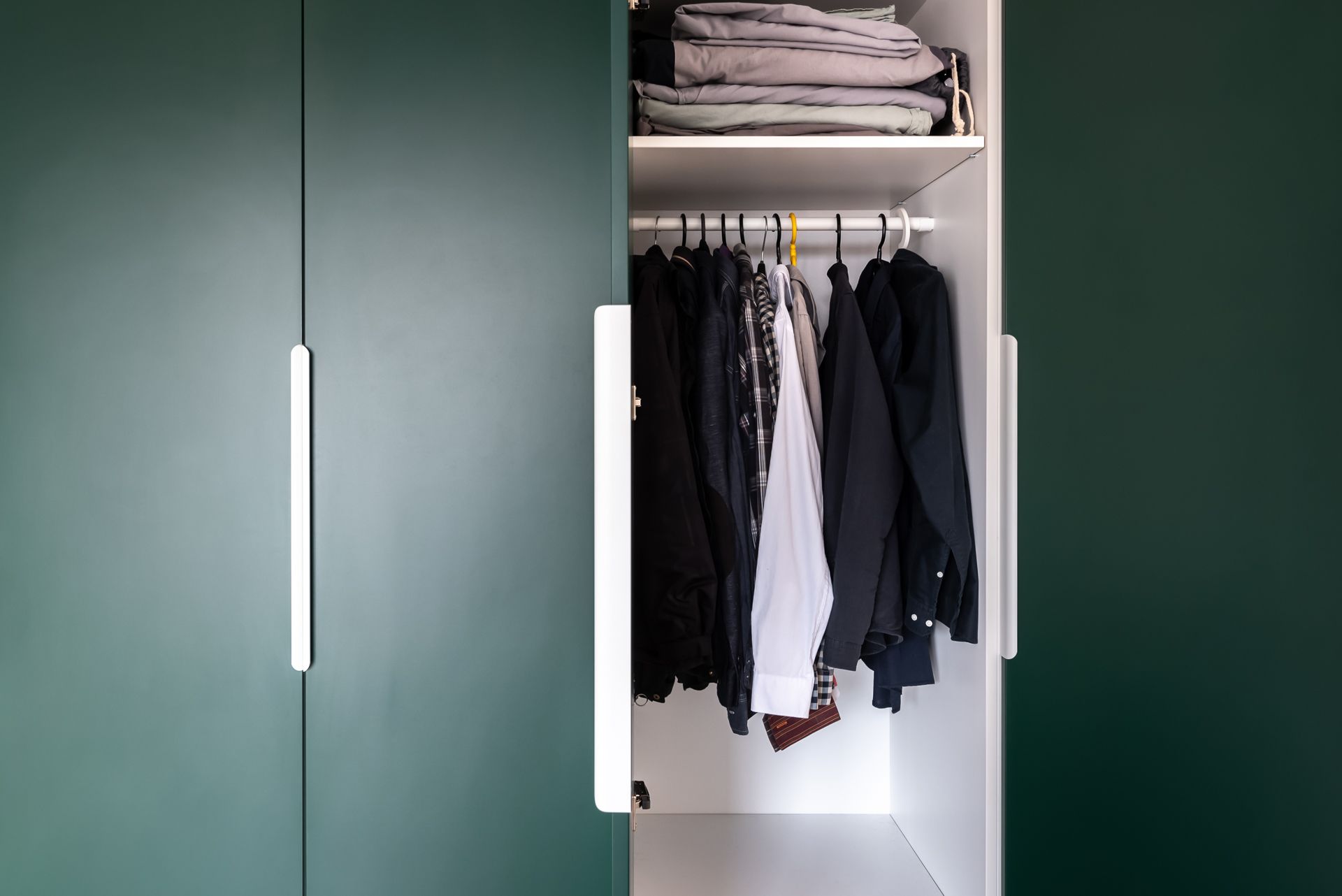
Norbert Juhász: Although neither of us is a designer, we see it on many of our architect friends (and ourselves) that there is motivation and a need, on the one hand, and many of us have plans or ideas on hold that were only seen by the drawer so far or maybe that were installed into an apartment in an interior design project. In the latter case, why couldn’t this object be taken out from there and made available for others, too?
Dani and Beatrix are also good friends of ours, with whom it was easy to work. There are several other similar projects in progress, and we would be happy if we could work together with even more designers.

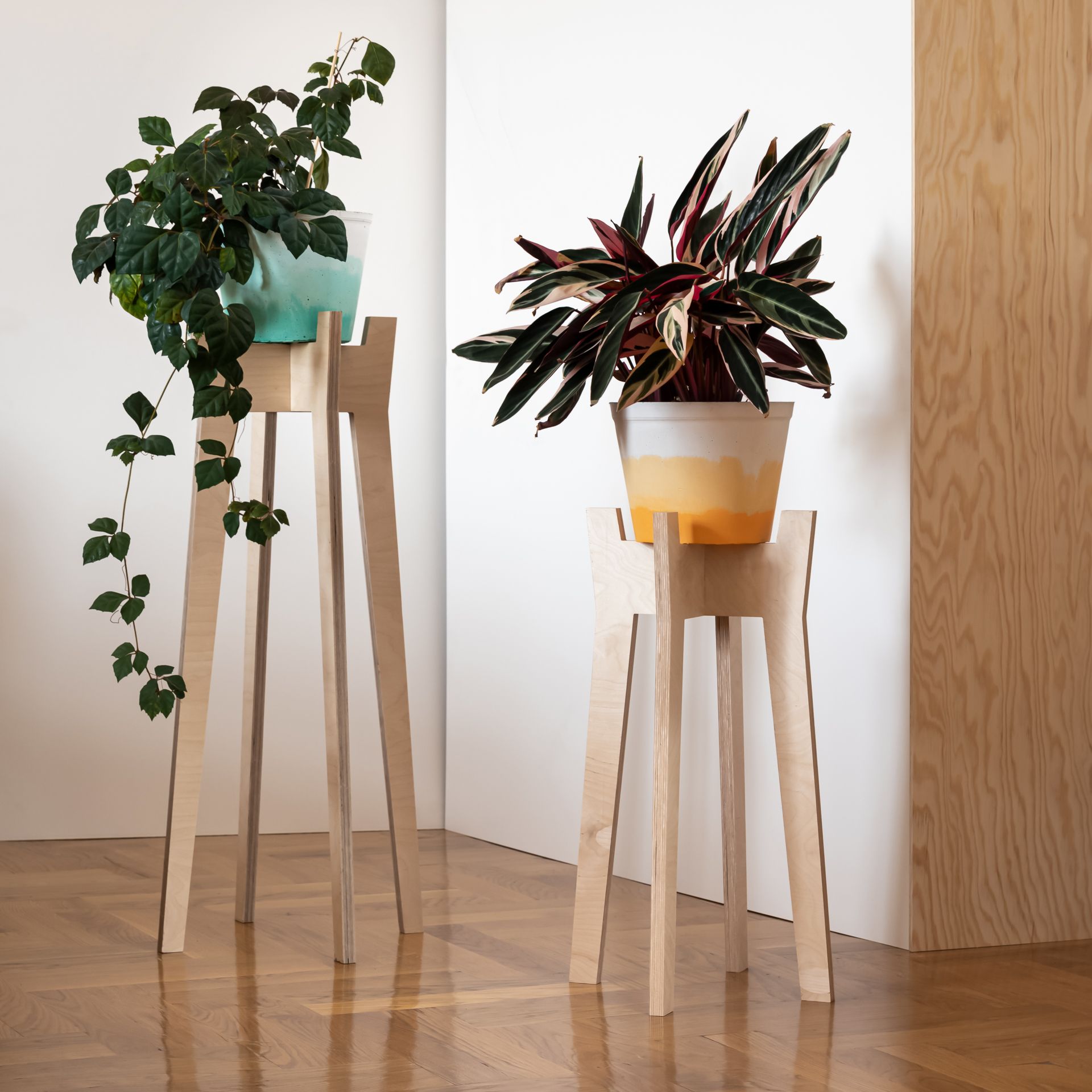
In 2018, you designed a meditation cabin in the framework of an international call, which you were thinking about and working on for quite some time. This is a small-scale cabin in the woods on 20 square meters, allowing the inhabitants to slow down and concentrate inwards. What was this competition about and what else is there to know about the cabin? If I’m correct, it hasn’t been built yet.
Péter Nagy: Actually this call was our first project together. We have talked about it previously several times that we both wanted to build a forest cabin, out of simple curiosity. The competition came just in time. We even capped the call off with creating a design that the two of us could build within weeks. Although we didn’t win the competition, we are still satisfied with our design even today. After the call was closed, we started to think about the economic feasibility of the cabin. The few months when we only focused on this was a very useful learning process from the point of Komok. We hope it’ll be continued.
Norbert Juhász: The competition was organized by Bee Breeders under the name “Silent Meditation Forest Cabin”. During that time, we also developed designs for a smaller cabin, where quick and cost-effective manufacturing was the main aspect. At the time, we thought about it a lot whether we should jump on the “cabin train” ever so popular today. Finally we decided to put it on hold and started Komok, but didn’t let it go fully: both of us hiked a lot and we love nature very much, and so the thought of creating a forest cabin is very appealing to us. We’ll continue it once we have capacity.
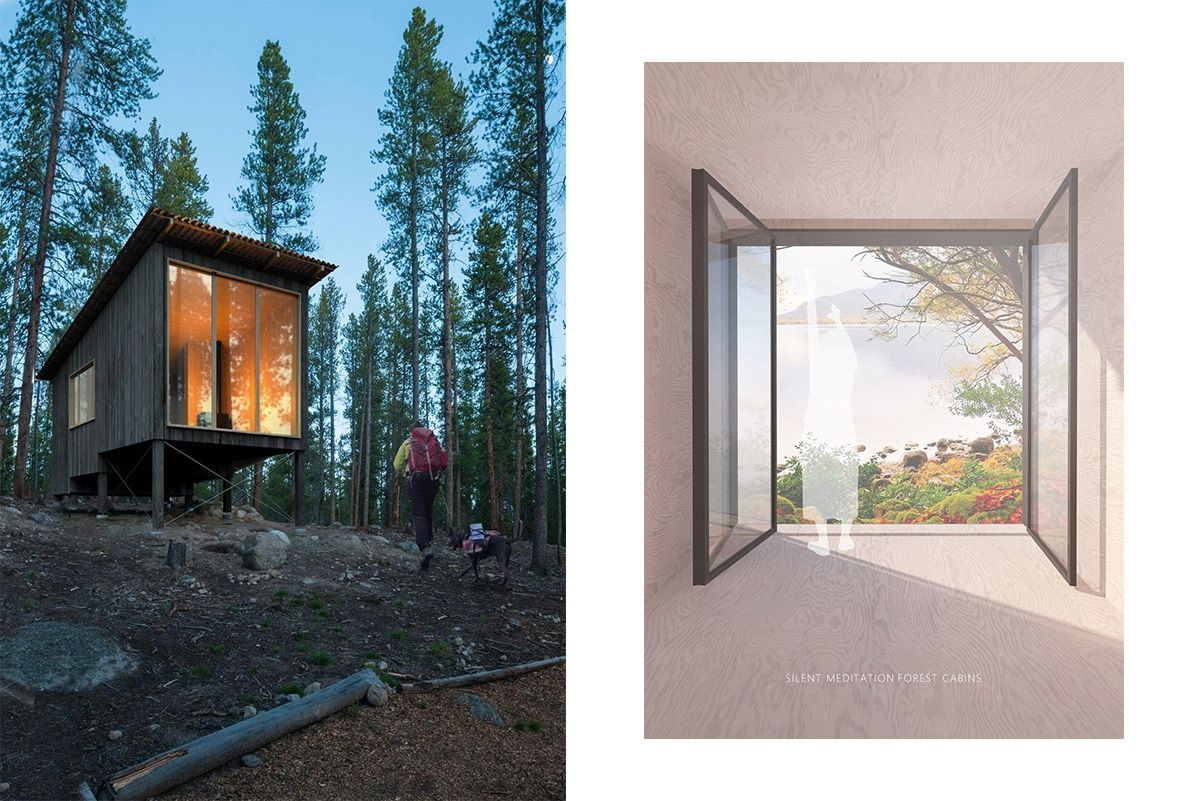
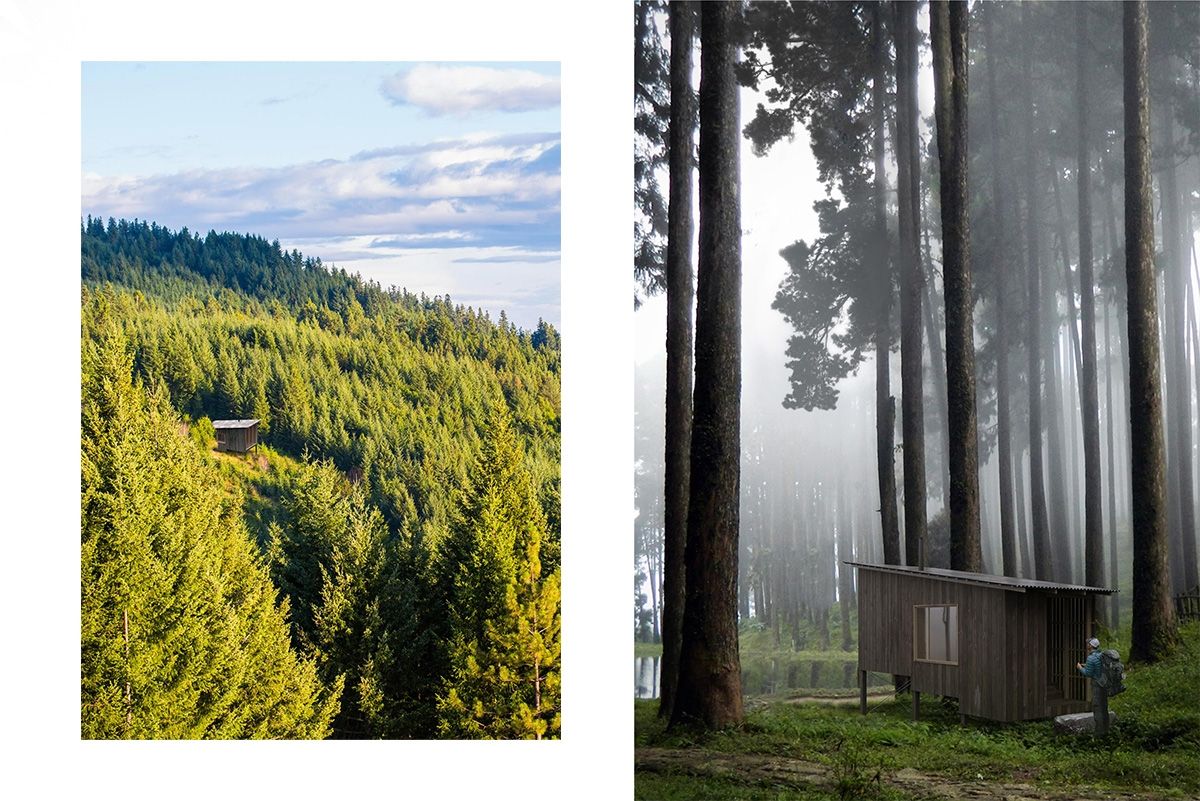
Norbert designed the “LDV DESK” in the spirit of sustainability. This is an open source product, which was created with CNC milling for the Distributed Design competition announced by FabLab in 2019. In what stage is this project now?
Norbert Juhász: Two prototypes were made of it, which the audience could see on the Home Design exhibition and in Allée Shopping Center last year. This year, we’ve also talked about a fair in Vienna, but then life intervened. I brought the desk from FabLab in the past days, I would like to further develop the prototype. I am very much intrigued by open source and distributed design, the designs of “LDV DESK” will also be published on Wikifactory, but we’ll be happy to manufacture it, too. We have already been contacted by a Spanish furniture manufacturer saying that they would like to manufacture it – we’ll see. FabLab helped us a lot in making a furniture that can be manufactured well, I learnt quite a lot from it.

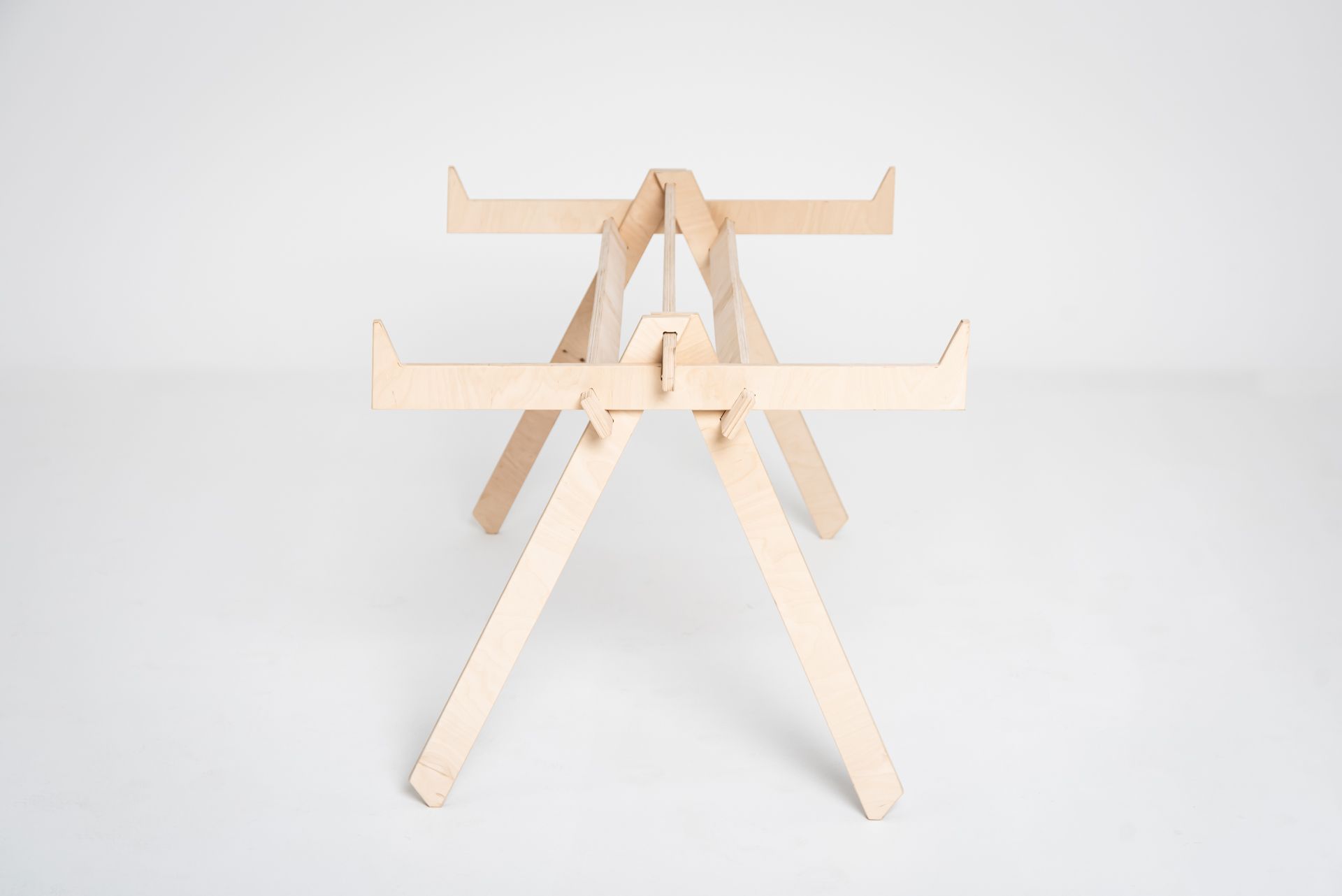
A few years ago, several international design outlets, including Designboom were writing about your “Debella” project. This is a 6 square meter motor home, designed by Norbert and his partner, Dóra Melis. Why did you start this project and what happened to the vehicle since?
Norbert Juhász: This happened in 2016: Dóri (who has become my wife since) and I got quite fed up with urban life. Our plan was to buy a minivan from our money saved up which we would transform into a motor home, and then travel around the world with it. The whole project, together with construction and travelling, took up approximately a year. It was an incredibly dominant and transformative experience for both of us. To be honest, this was the first time I thought about the fact that we should make a company engaged in manufacturing furniture, and it was building the vehicle that gave me the impetus and confidence to be able to do that. Unfortunately we had to get rid of the car at the end of the journey, but we love browsing our blog written during the trip ever since.
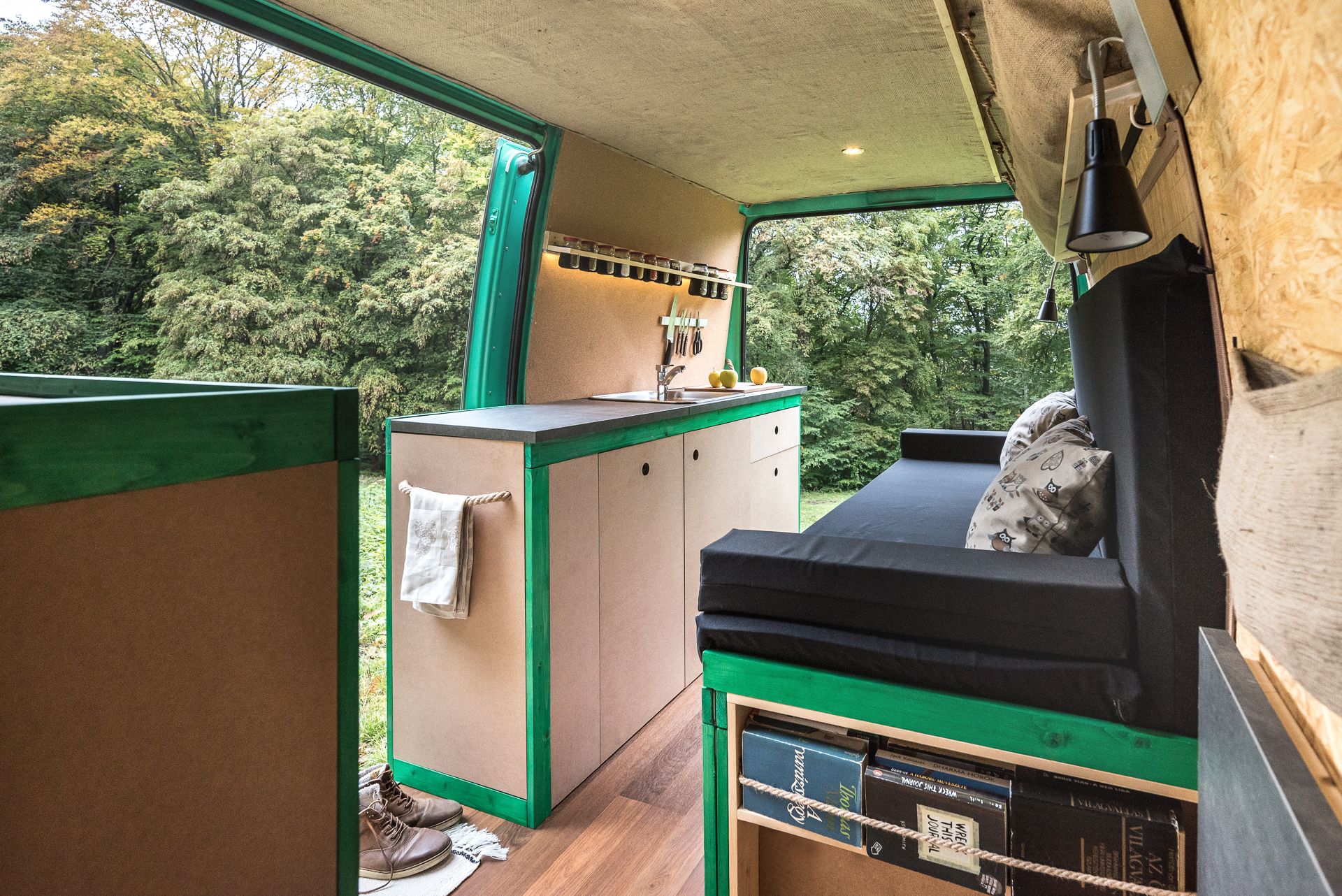
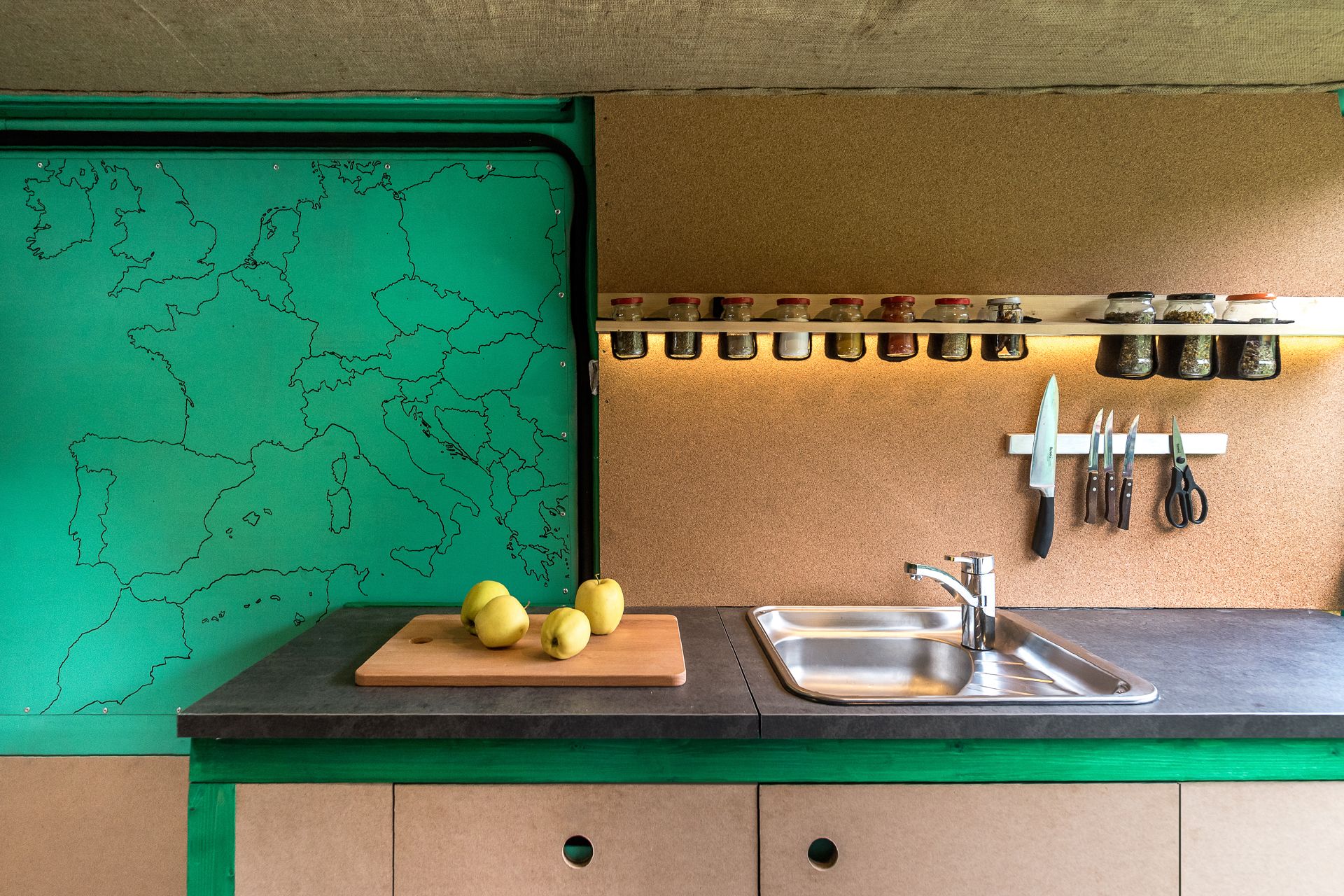
The basic image of KOMOK was designed by Gyöngyi Barta, suggesting a clean, geometric and playful brand behind the name.
Péter Nagy: We could work well with Gyöngyi from the very beginning, and we also work with her at the moment: we still ask her for help when we need some graphic design works.
Norbert Juhász: Gyöngyi is both an architect and graphic designer. You can see her works in architecture-related matters, for example she has created the image of Budapest Architecture Film Days for several years now.
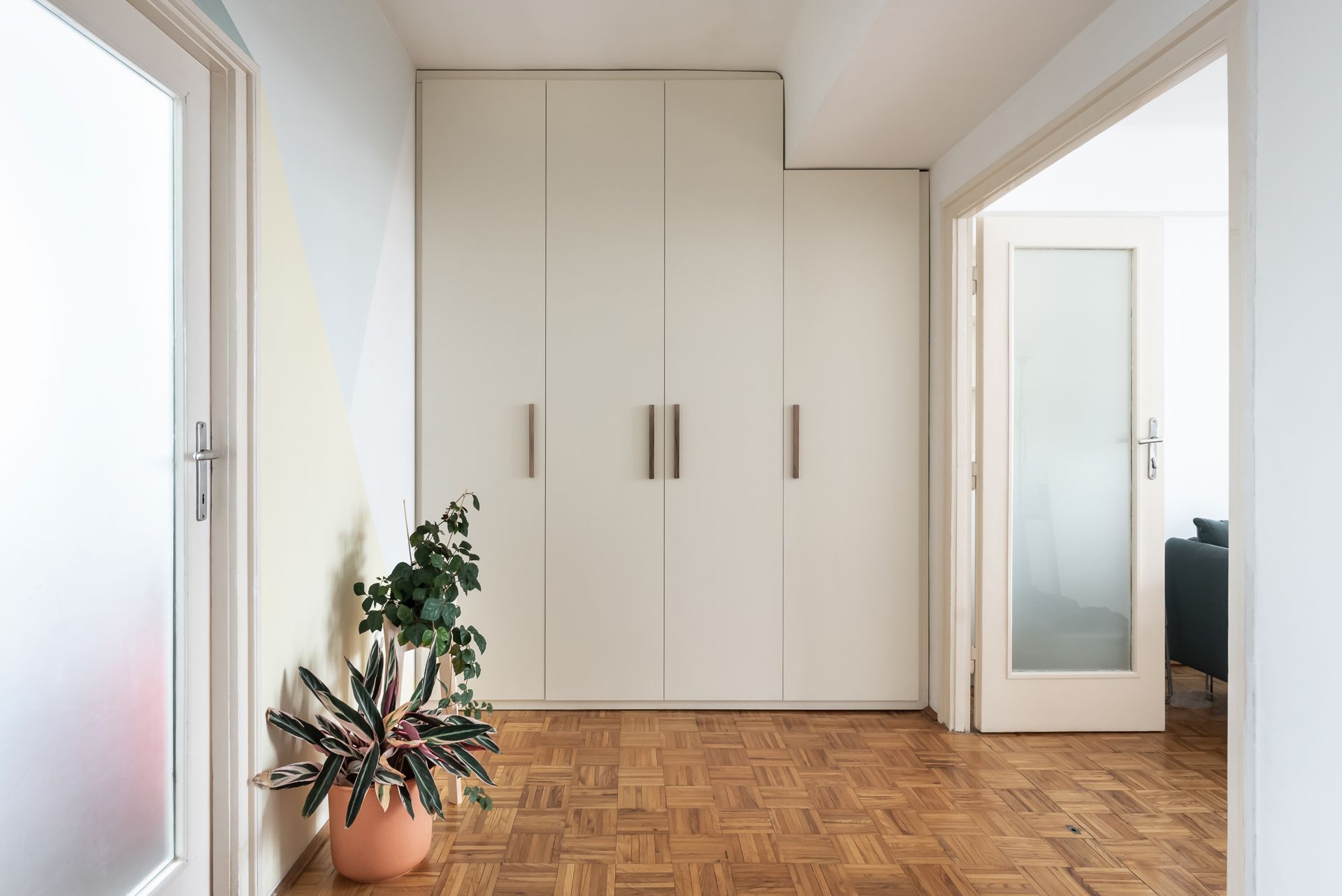
What projects are you working on currently, what can we expect in the future?
Péter Nagy: Now we work on some fitted furniture, the designs of which we will complete in the upcoming days, so these will be ready for construction. The new limited series products are continuously under design, currently approximately five products are ready for prototypes, and the first pieces are already manufactured in the case of four others. We would also like to start developing products only using recycled plastic.
Norbert Juhász: Now we have a little more time to work in the workshop, on prototypes, which we see as a good thing. Due to home office, we also spend our money that we would otherwise use for renting offices on prototype development, we develop products, and take care of the various things entrepreneurs have to deal with – creating the final version of the website also took several weeks.
We hope everything will be back to order soon, and we also trust ourselves: we have the skillset and we are agile enough to be able to respond to and to steer the economic changes in the right direction.

HYPE | Weekly online program guide

Coffee machines made of concrete | AnzaCoffee
